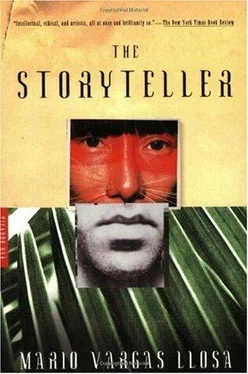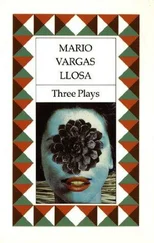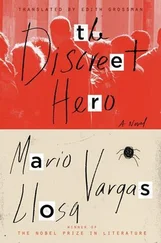Lake Yarina was still a picture postcard, and dusk there more beautiful than ever. The bungalows of the Institute had proliferated along the lakeshore. The minute we climbed out of the jeep, Lucho, Alejandro, and I set to work. We agreed that as soon as night fell, to serve as an introduction to our trip to the forests of the Alto Urubamba, the Schneils would brief us on the places and people we would be seeing up there.
Other than the Schneils, not one of the linguists whom I had met on my previous journey was still in Yarinacocha. Some had gone back to the States; others were doing fieldwork in other jungle regions around the world; and some had died, as had Dr. Townsend, the founder of the Institute. But the linguists whom we met and interviewed, who acted as our guides as we photographed the place from various angles, appeared to be the identical twins of the ones I remembered. The men had close-cropped hair and the athletic, healthy appearance of people who exercise daily, eat according to the instructions of a dietician, don’t smoke, and take neither coffee nor alcohol, and the women, encased in dresses as plain as they were decent, without a speck of makeup or a shadow of coquetry, exuded an overwhelming air of efficiency. Men and women alike had the cheerful, imperturbable look of people who believe, who are doing what they believe in, and who know for certain that the truth is on their side: the sort of people who have always fascinated and terrified me.
As long as the light and the caprices of Alejandro Pérez’s equipment permitted, we went on collecting material for the program on the Institute: a seminar of bilingual teachers from various villages that was taking place at the time; the elementary readers and grammar books compiled by the linguists; their personal testimony and an overall view of the small town that the Yarinacocha base of operations had become, with its school, its hospital, its sports field, its library, its churches, its communications center, and its airport.
As darkness fell, after a combined work session and meal during which we rounded off our plans for the part of the program devoted to the Institute, we began mapping out the part we would be recording during the following days: the Machiguengas. In Lima I had unearthed and consulted all the documents concerning them that I had been accumulating over the years. But it was chiefly a conversation with the Schneils — once again at their house, once again over tea and cookies prepared by Mrs. Schneil — that provided us with firsthand information on the state of the community that they knew inside out, since it had been their home for the past twenty-five years.
Things had changed considerably for the Machiguengas of the Alto Urubamba and Madre de Dios since the day when Edwin Schneil, stark-naked, had approached that family and it had not fled. Had things changed for the better? The Schneils were firmly convinced that they had. For the moment, the dispersion that had characterized Machiguenga life had largely come to an end — and this was true of the ones on the other side of the Pongo de Mainique as well. The diaspora — little groups scattered here and there with virtually no contact between them, each one fighting desperately for survival — was over; had it continued, it would have meant, purely and simply, the disintegration of the community, the disappearance of its language, and the assimilation of its members by other groups and cultures. After many efforts on the part of the authorities, Catholic missionaries, anthropologists, ethnologists, and the Institute itself, the Machiguengas had begun to accept the idea of forming villages, of coming together in places suitable for working the soil, breeding animals, and developing trade relations with the rest of Peru. Things were evolving rapidly. There were already six settlements, some of them very recent. We would be visiting two of them, New World and New Light.
Of the five thousand surviving Machiguengas — an approximate figure — nearly half were now living in those settlements. One of them, moreover, was half Machiguenga and half Campa (Ashaninka), and thus far the cohabitation of members of the two tribes had not given rise to the slightest problem. The Schneils were optimistic and believed that the remaining Machiguengas — including the most elusive of all, the ones known as Kogapakori, would gradually abandon their refuges in the heart of the forest and form new settlements when they saw the advantages that living in community brought to their brothers: a less uncertain life and the possibility of being helped in case of emergency. With heartfelt enthusiasm the Schneils told us of the concrete steps that had already been taken in the villages to integrate them into national life. Schools and agricultural cooperatives, for instance. Both in New World and in New Light there were bilingual schools, with native teachers. We would be seeing them.
Did this mean that the Machiguengas were slowly ceasing to be that primitive people, shut in on itself, pessimistic and defeated, that they had described to me in 1958? To a certain extent, yes. They were less reluctant — the ones who lived in communities, at any rate — to try out novelties, to progress; they had more love of life, perhaps. But as far as their isolation was concerned, one couldn’t talk thus far of any real change. Because, even though we could reach their villages in two or three hours in the Institute planes, a journey by river to one of these settlements from any sizable Amazonian town was a matter of days and sometimes weeks. So the idea of their becoming an integral part of Peru was perhaps a little less remote than in the past, but was certainly not a reality as yet.
Would we be able to interview any Machiguengas in Spanish? Yes, a few, though not many. The cacique or governor of New Light, for example, spoke Spanish fluently. What? Did the Machiguengas have caciques now? Hadn’t one of the distinctive features of the tribe been the absence of any sort of hierarchic political organization, with leaders and subordinates? Yes, certainly. Before. But that anarchic system typical of them was explained by their dispersion: now that they were gathered together in villages, they needed authorities. The administrator or chief of New Light was a young man and a splendid community leader, a graduate of the Mazamari Bible School. A Protestant pastor, in other words? Well, yes, you might call him that. Had the Bible been translated into Machiguenga yet? Of course, and they had been the translators. In New World and New Light we would be able to film copies of the New Testament in Machiguenga.
I remembered Mascarita and our last conversation in the seedy café on the Avenida España. I heard once again his prophecies and his fulminations. From what the Schneils told us, Saúl’s fears, that evening, were becoming a reality. Like other tribes, the Machiguengas were in the very midst of the process of acculturation: the Bible, bilingual schools, an evangelical leader, private property, the value of money, trade, Western clothes, no doubt…Was all this a good thing? Had it brought them real advantages as individuals, as people, as the Schneils so emphatically maintained? Or were they, rather, from the free and sovereign “savages” they had been, beginning to turn into “zombies,” caricatures of Westerners, as Mascarita had put it? Would a visit of just a couple of days be long enough for me to find out? No, of course it wouldn’t.
In the Yarinacocha bungalow that night, I lay awake for a long time thinking. Through the fly screen on the window, I could see a stretch of lake traversed by a golden wake, but the moon, which I imagined as being full and bright, was hidden from me by a clump of trees. Was it a good or a bad omen that Kashiri, that male astral body, sometimes malevolent, sometimes benevolent, of Machiguenga mythology, was concealing his stained face from me? Twenty-three years had passed since I had first slept in one of these bungalows. In all those years it was not only I who had changed, lived through a thousand experiences, grown older. Those Machiguengas, whom I knew, if at all, from only two brief accounts by this American couple, a conversation in Madrid with a Dominican, and a few ethnological studies, had also undergone great changes. Quite evidently, they no longer fitted the images of them that my imagination had invented. They were no longer that handful of tragic, indomitable beings, that society broken up into tiny families, fleeing, always fleeing, from the whites, from the mestizos, from the mountain people, and from other tribes, awaiting and stoically accepting their inevitable extinction as individuals and as a group, yet never giving up their language, their gods, their customs. An irrepressible sadness came over me at the thought that this society scattered in the depths of the damp and boundless forests, for whom a few tellers of tales acted as circulating sap, was doomed to disappear.
Читать дальше












